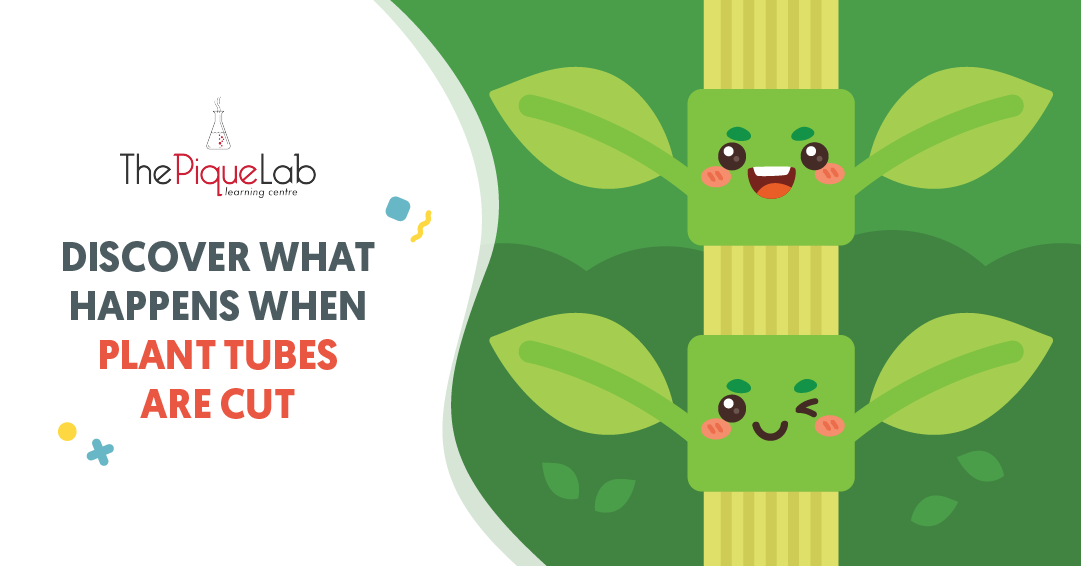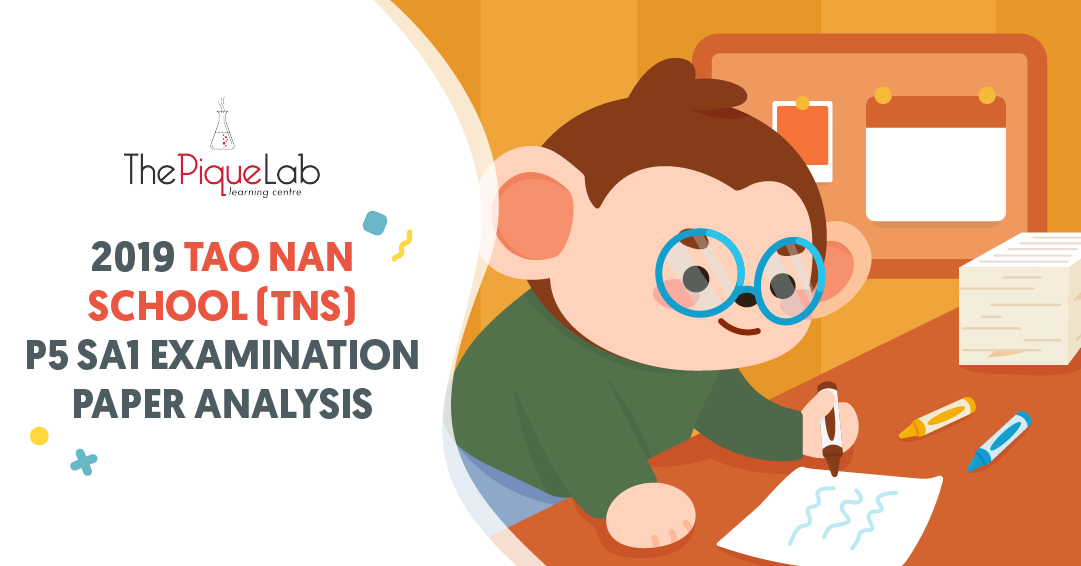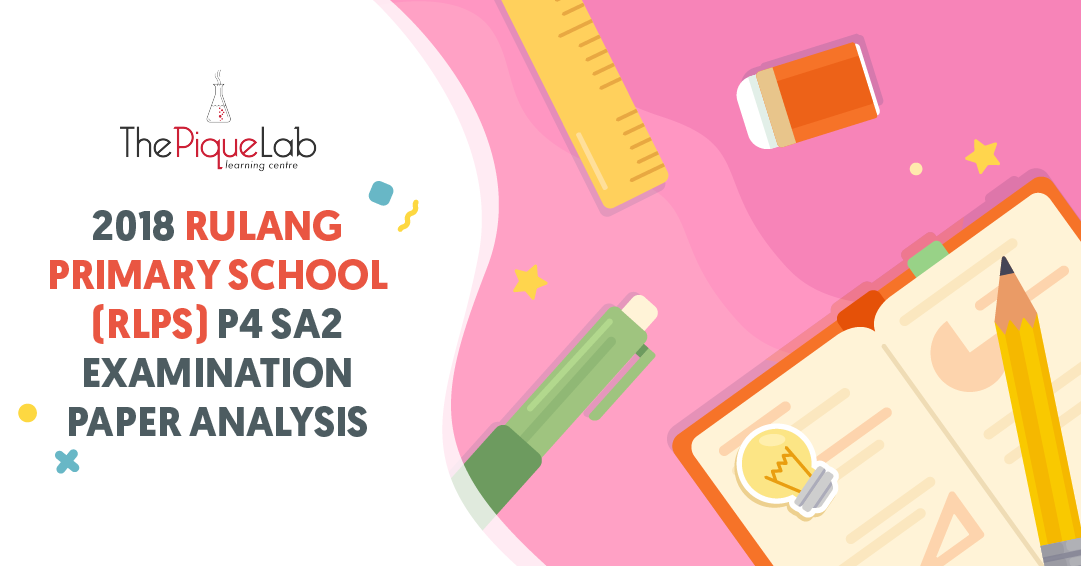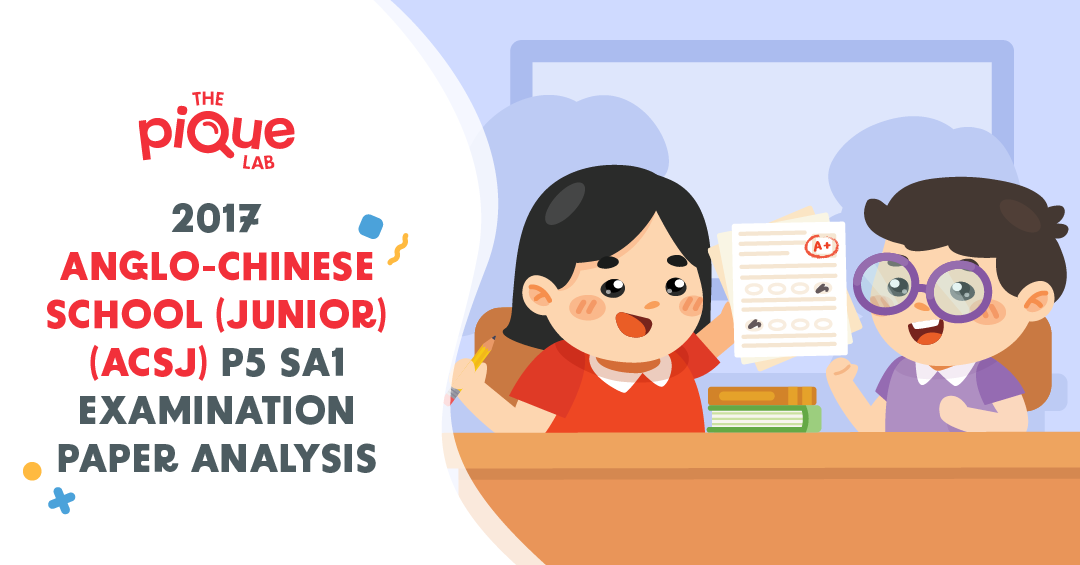In the primary school Science syllabus, your child is expected to learn & understand the different plant parts, such as the roots, stem and leaves.
It is very common to see questions testing students on their knowledge of the roots & leaves. The good news is that most students typically prepare very well for questions on these two plant parts.
Read Also
However, they tend to struggle when they encounter questions involving the stem.
In most cases, examiners like to present a case where the plant’s stem is cut at a few sections. Students are expected to observe what happens after the stem is cut.
In this article, I will provide a brief summary of the important parts within the plant’s stem. Following which, I’ll be showing you the thought processes behind tackling such questions, with the aid of a frequently tested example.
What Your Child Should Know
Primary school students are required to know that the stem contains food-carrying tubes (phloem tubes) and water-carrying tubes (xylem tubes).
Aside from that, they’re expected to know their respective functions for the plant.
Phloem Tubes
Food-carrying tubes carry the food made by the leaves to the other parts of the plant.
The food is then used by the plant cells, in the process of respiration, to release energy for the plant.
Xylem Tubes
Water-carrying tubes carry water and mineral salts absorbed by the roots to the other parts of the plant.
Water is needed for the leaves of the plant for photosynthesis to make food, while mineral salts are used to ensure that the plants remains healthy.
Other than the functions of the phloem and xylem tubes, it is important for students to know the positions of the tubes in the stem.
An acronym that we use to help our students remember the position of the tubes is:
WIFO: Water Inside, Food Outside (think: WiFi)
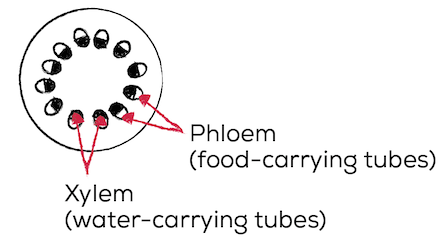
Cross Section of Plant Stem
This means that the water-carrying tubes are on the inner side of the stem. Conversely, the food-carrying tubes are on the outer side of the stem.
Another method of remembering this concept is to note that food-carrying tubes are also known as phloem tubes.
Both “Food” and “Phloem” has the alphabet “o” in it & they can be associated together. Using the same line of thought, food-carrying tubes (or phloem tubes) can be associated as tubes that are located on the outside.
What Happens When The Tubes Are Cut?
Phloem / Food-carrying Tubes
Food that is made by the leaves will not be able to move down the stem to be transported to the other parts of the plant.
As a result, this causes the food/starch to accumulate and swell at the opening/end of the cut.
Xylem / Water-carrying Tubes
Water that is absorbed by the roots of the plant will not be able to move up the stem to be transported to other parts of the plant, such as the leaves.
As a result, the leaves will not have sufficient water; a factor that is needed for photosynthesis to make food for the plant.
Here’s A Frequently Tested Question

Thought Process
With the above information, let’s take a look at the question now.
Leaf A: Both the food-carrying tubes and the water-carrying tubes are still intact.
Leaf B: Both the food-carrying tubes and the water-carrying tubes are removed.
Leaf C: Both the food-carrying tubes and the water-carrying tubes are removed.
Leaf D: The food-carrying tubes are removed but the water-carrying tubes are still intact.
To present these information in a clearer manner,

*Note: Iodine is initially brown in colour and will turn dark blue when starch is present. Starch is present when EXCESS food made by the leaves is stored (as starch).
The focus of this question should be the water-carrying tubes.
Plants require carbon dioxide and water, in the presence of sunlight, to make food during photosynthesis. This means that the leaves above the cut would not be able to receive water once the water-carrying tubes are removed.
As a result, the plant will not be able to carry out photosynthesis to make food.
Let’s Look At The Above Table
Only Leaf A and D will receive water because their water-carrying tubes are still intact.
As such, Leaf A and Leaf D will be able to conduct photosynthesis to make food. This is because they are capable of receiving water and taking in carbon dioxide in the presence of sunlight.
The excess food made by Leaves A and D will then be stored as starch. When iodine comes into contact with starch, it will turn from brown to dark blue.
On the other hand, Leaf B and Leaf C have their water-carrying tubes removed.
The water that is absorbed by the roots and transported up the stem cannot reach the leaves. Thus, the leaves cannot receive the water needed for photosynthesis to make food for the plant.
As Leaf B and Leaf C are unable to make food, there will be no excess food stored as starch. Therefore, iodine will remain brown.
Final Answer
Therefore, the answer to this question would be Option (4).
Last Note:
Before the respective tubes were removed, all the leaves would have received water and carbon dioxide in the presence of sunlight to make food in the process of photosynthesis.
Thus, students may think that the excess food made before the tubes were removed would be stored as starch and may turn iodine dark blue.
However, if you take a closer look at the information provided in the question, it is mentioned
The plant was left under the sun for a week…
This suggests that the excess food initially stored as starch in Leaf B and Leaf C (before both tubes were removed) would have been used up by the plant cells during that week, in the process of respiration to release energy.
As a result, Leaf B and Leaf C will not have any EXCESS food stored as starch. As a result, iodine will not change from brown to dark blue.

If you like our methodology, we’ve some upcoming workshops:

